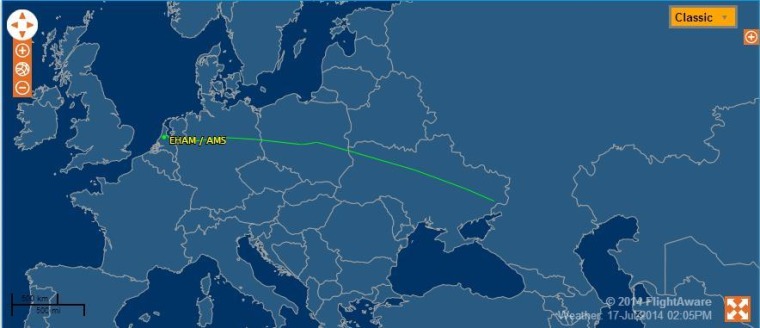While most travelers think of their flights as Point A to Point B experiences, the downing of Malaysian Airlines Flight 17 has proven that it’s just as important to consider the points in between. And with news reports describing another Malaysia flight flying over war-torn Syria on Monday, you might be asking yourself, how can I tell if my flight is going to fly over a war zone or other trouble spot?
Unfortunately, you probably can’t — at least not until you’re about to step on board.
Sign up for top Business news direct to your inbox.
“Routes aren’t known until one or two hours before a flight when the dispatcher makes a decision as to which route to operate and then files it with air traffic control,” said former airline dispatcher Phil Derner, founder of aviation-enthusiast site NYCAviation.com. “And once a route is filed, it can change multiple times — it doesn’t become ‘Bible’ once it’s filed.”
Once a flight plan is filed with the FAA, however, the itinerary information then becomes available to third-party sites and apps, such as FlightStats and PlaneFinder, which do an admirable job of showing a plane’s current location. Others, including FlightAware and WindowSeat, show complete route information but are limited to North America and, of course, rely on flight plans that are subject to subsequent changes.
“If there's no choice but to fly over dangerous weather vs. a possible geopolitical hotspot they [face] a tough choice.”
Determining an international flight’s exact path is even harder. “The timeline for filing routes is about the same,” said Derner. “But there are a lot of areas in the world that don’t have as amazing resources to track weather, volcanic activity or war zones.”
Complicating matters further is the fact that different aviation authorities approach problem situations differently. While the FAA had previously prohibited U.S. carriers from flying over parts of Ukraine back in April, European authorities only did so after Malaysia Airlines Flight 17 was shot down.
And it’s likely that airlines will continue to fly over the world’s hot spots as they try to balance flight times, fuel burn, weather and a host of other variables.
“If there's no choice but to fly over dangerous weather vs. a possible geopolitical hotspot they [face] a tough choice,” said George Hobica, president of AirfareWatchdog. “It might only be a matter of 5, 10 or 15 minutes longer flight to avoid a country where there might be potential bad actors with access to surface to air missiles. But if a flight is already late, and there are connecting passengers who might miss their flights, I wonder if an airline might take a chance.
“With ISIS active in Syria, personally I'd rather that my pilot arrive late rather than flying over the country!”
